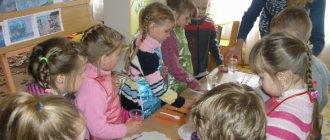Fairytale therapy is a method of psychological work with children that helps correct behavior, eliminates fears and promotes healthy psycho-emotional development. The uniqueness of this method is that it can be used by both certified child psychologists and ordinary parents, albeit in a simpler form.
Among the methods of fairy tale therapy for preschool children, the most often used are telling fairy tales, inventing them together and acting them out. You can use both well-known folk or original stories, and tales specially invented for a particular problem.
Why is fairy tale therapy useful for children?
- gentle behavior correction;
- elimination of fears, phobias, neuroses;
- experiencing negative emotions;
- education of general human qualities and moral standards;
- unobtrusive training and development;
- accumulation of situational experience.
Fairytale therapy - how does this method work?

Fairytale therapy is a method that helps a child (or adult) concentrate on their problem. When used skillfully, fairytale therapy can provide the psychologist with clear routes for correcting behavior and treating depressive conditions in patients.
Each fairy-tale story plays out a specific situation that happened in the patient’s life. The characters are endowed with the characters of real people, and a conflict situation always has a logical solution. This therapy makes a connection between the events that occur in a fairy tale and reality, and transfers magic into everyday life.
The main goal of fairy tale therapy is the development of personality and care for the soul. The kid meets the best version of himself in a fairy tale, learns from the hero to do good deeds, to be happy and fair.
What problems can fairy tale therapy help you cope with?
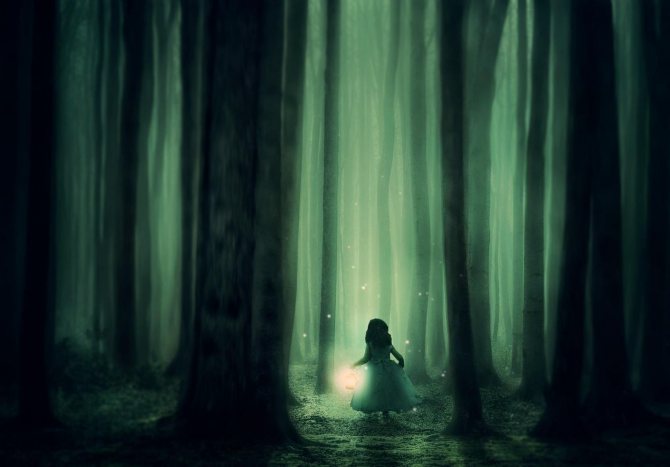
Collective writing of fairy tales will help preschoolers get comfortable in a group, learn to make friends with their peers, and teenagers - understand themselves and their classmates. A jointly created fairy tale will reveal which of the children plays what roles in life, and will provide an opportunity to look at their character and behavior from the outside.
If parents compose a fairy tale together with their child, this makes it possible to speak the same language, to find out the child’s hidden thoughts, dreams and aspirations. A fairy tale will develop creativity and a sense of humor in both adults and children.
If you ask your child to draw or mold magical characters from plasticine, you can effectively practice the skills of writing, modeling, drawing, and help the young storyteller develop motor skills, perseverance and attentiveness.
Fairytale therapy copes with such children's problems as difficulties in communication and learning, as well as loneliness, low self-esteem, laziness, fears, aggression, excessive activity, psychosomatic diseases, and will help determine the reason why a child refuses to go to kindergarten or school.
Using the language of fairy tales, adults comprehend the nuances of interpersonal relationships and get to know themselves better. A magical story helps you take a fresh look at the world around you and improve your quality of life.
Fairy tales in psychotherapy are divided into 4 main groups according to the problems they address:
- For difficulties in communication
The fairy tale tells about the conflicts, quarrels, and grievances that a child has in kindergarten, at school, in the family, and on a walk.
- During age crises
the child seems to get used to his new role, to a new position (for example, to independence in kindergarten); all these moments can be played out in a fairy tale.
- With internal experiences
in the fairy tale, the hero is shown - the baby himself, his inner world is examined, complexes and contradictions are revealed, so that the child can answer the question: “What’s wrong with me?”
- For worries and fears
It is necessary, with the help of a fairy tale, to determine what the baby is afraid of, what prevents him from developing, what takes energy.
Fairytale therapy for children 5-6 years old
Older preschoolers often feel insecure, afraid of appearing funny or doing something wrong. Fairy tales can help cope with such conditions. For example, the classic story about the ugly duckling is suitable for children with low self-esteem, and the fairy tale about the steadfast tin soldier is suitable for insecure, overly cautious children.
At this age, the best results can be obtained both by reading fairy tales aloud and by composing them together. With careful observation, such an exercise provides a lot of additional information (body position, facial expressions, intonation) about the general psychological state of the child.
Types of psychotherapeutic tales

There are five main types of fairy tales:
- Didactic fairy tales
They set themselves the task of sharing new knowledge and skills, suggesting possible options for behavior in a certain situation, and giving answers to questions. Psychologists use them when counseling preschool and primary school children, adolescents and adults. Usually, after reading a fairy tale, you are asked to complete a simple task.
- Psychological tales
– these are the author’s fictional stories that can influence the development of the listeners’ personality through the presentation of vivid metaphors.
- Psychotherapeutic tales
have the greatest effectiveness; these are wise and beautiful stories with deep meaning on the theme of a person’s relationship to himself, to others, to the whole world. Such fairy tales have the task of correcting fears and phobias, eliminating suffering, and helping patients overcome trauma.
- Psychocorrectional fairy tales
are composed with the goal of carefully adjusting the behavior and character traits of an adult or child. Typically, such stories may echo everyday reality or contain many abstract metaphors, and therefore require clarification and discussion. Psychocorrectional fairy tales are used when working with aggressive adults and hyperactive children and are necessarily tailored to a specific individual.
- Meditative tales
they have neither a bright plot nor a negative character, they do not talk about an obvious conflict, their task is to set the patient up for a psychotherapeutic session, activate the unconscious thinking process, motivate a decision or action, and help calm down before going to bed.
Fairytale therapy in the practice of a psychologist
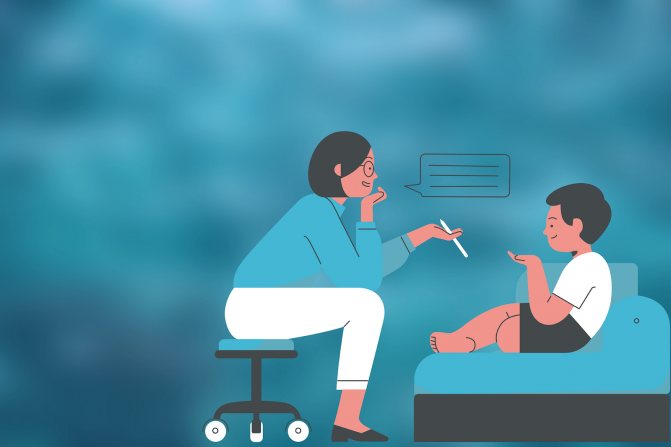
The effectiveness of fairy tale therapy depends on the correctly chosen genre (and the metaphor included in the story). When making a choice, the therapist relies on the age of the listeners, their interests and beliefs, and the nature of the existing difficulties.
Fairy tales are used in psychotherapy:
- in diagnostics, the task of which will be to determine the main life scenarios of the patient, his behavioral characteristics, abilities and attitude;
- in psychotherapy, the task of which will be to solve existing psychological problems and consolidate a new model of behavior;
- in prognostication, the task of which will be to help the patient understand the influence of his current behavior on future events.
The following actions are used during therapy:
- reading or retelling a fairy tale;
- discussion of an existing fairy tale;
- inventing your own story/fairy tale;
- drawing, modeling, appliqué of fairy-tale events or characters;
- a dramatization or theatrical production based on a fairy tale.
Principles and methods of work of a fairytale therapist
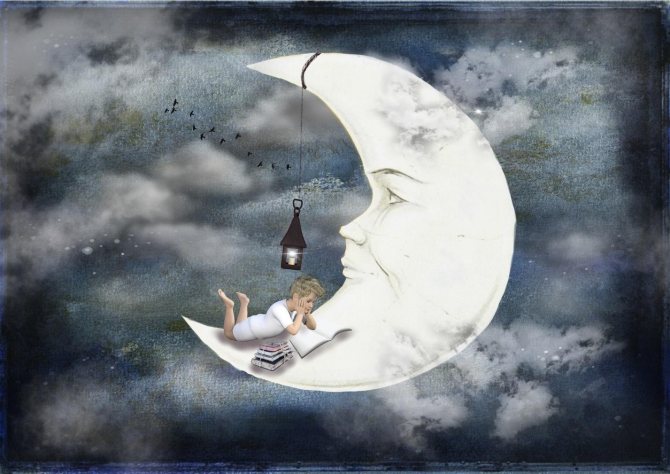
The fairytale therapist builds his work with children in accordance with the principles:
- the story must be emotional;
- the child, while listening, should see the narrator’s facial expression, his emotions and gestures;
- you need to tell a fairy tale in an even, melodious voice, using repetitions;
- the tale should not contain too long pauses;
- the story should imply the likelihood of several possible solutions and answers to questions;
- current problems are encrypted in the text using images and metaphors;
- heroes must be clearly positive and clearly negative;
- While reading, it is necessary to monitor the behavior and emotions of the listener and be able to correctly interpret them.
You can fully study all the effective methods and techniques of fairy tale therapy on our distance professional retraining course. You will not only acquire useful knowledge, but also gain the right to apply it in the practical work of a psychologist.
Fairytale therapy for children 3-5 years old
At this age, children begin to feel like a separate person. They may experience whims, hysterics, and night terrors. Treatment with fairy tales will help you cope with all these problems.
A fairy tale about the sun - for hyperactive and capricious children.
In a galaxy far, far away, many millions of light years away from us, there lives the Sunshine family. Big Sunny is dad, smaller Sunny is mom, little Sunny is son and tiny Sunny is daughter. They all live as a friendly family. They read together and come up with strange stories.
Each of them, from birth, has his own job, which he performs constantly without breaks or vacations - they illuminate and warm the planets that revolve around each of them. And everything would be fine, but Sonny Sunny was famous for his capriciousness: he is capricious, says “I don’t want”, “I won’t”...
Does this happen to you?
Mom and dad don’t know what to do, how to explain to their son that such behavior is not appropriate for Sunny, because being Sunny is a great honor, but at the same time, it’s also a great responsibility—after all, life on the planets depends on you. Where there is responsibility, there is no place for harm.
Sonny Sunny was capricious today too:
- I don’t want to shine from the right, I don’t want to stand in one place for so long, I don’t want to get up so early... I’ll take it and won’t shine on the planet Cyprana, where living beings live. I'll turn away!
And Sonny Sun turned away from the Cyprians, and it became dark and dark there. All the residents were scared. What will happen to them next? If the sun doesn’t shine, then plants, vegetables and fruits don’t grow, and when there’s no harvest, then there’s nothing to eat. And without food, as everyone knows, a living creature dies. Little children from Cyprus began to cry, because they were very afraid of the dark - it seemed that monsters or something terrible would attack them. But they didn’t know that in fact, almost all monsters are also afraid of the dark.
The Cypriots did not wait for death, they gathered everyone for a meeting and began to talk about how they should continue to live and what to do so that the Son of the Sun would shine on their planet again. These Cyprians are strange creatures. They had bulging eyes on their chin, a breathing and sniffing nose on their stomach, and a talking and eating mouth on their back. And they thought of solving the problem like this: they need to film a request to Sunny on a video camera. To do this, they took the last lanterns, gathered the children and all together told their son Sunny how hard it was for them to live without him. The children, crying, told about their fears. Then, the bravest ones launched a rocket and flew towards the Sun. We flew for several days to convey the request.
Sonny Sunny watched the recording (he loved watching cartoons), but this recording turned out to be sad. Sunny felt ashamed of his behavior and whims. He even burst into tears along with the Cyprian children, who were so afraid of the dark.
Since then, Sonny Sun has shone on all the planets in his system and has not been capricious, but obeyed his father and mother.
What a great guy, Sonny Sunny!
Are you also not capricious and obey your parents?
The Tale of the Tiger Cub - a story from psychologist Anna Kutyavina that will help shy children find friends
In one house there lived a small but very cheerful tiger cub. He loved to play and jump, run around the yard with his animal friends. And he had many friends: a fox, and a top, and a gray little hare, and a teddy bear, and even a prickly hedgehog. The tiger cub loved everyone, he happily told everyone funny stories, gave everyone rides on his tricycle and treated them to cotton candy. And everything would be fine, but only a tiger cub could sometimes get too playful and hit a friend or girlfriend, bite or pinch painfully. He thought it was fun and funny, but for some reason his friends were offended. Then, seeing their sad faces, the tiger cub began to bite and scratch them even harder - so that they would cheer up and begin to be friends with him again. But, of course, the friends only became more offended by the Tiger Cub and ran away from him.
And one day the Tiger Cub, as usual, went out onto the playground to play, and saw that none of the animals came up to him, or even said hello. On the contrary, everyone hurried to quickly run away from the site. And the Tiger Cub was left alone.
- I don’t want to be alone! - Tiger Cub growled. - Don't want!
The young Moon had just appeared in the sky. She looked at the Tiger Cub, felt sorry for him and said:
- So come to me! I have company here for you - my two sons.
The tiger cub nodded, Luna stretched out her hands to him and took him high, high. There, on the Moon, Tiger Cub immediately felt cold and very dark. He got scared and cried.
“Why are you crying?” asked a voice from the darkness.
- Because I'm alone. Nobody needs me, and no one wants to play with me,” sighed the Tiger Cub. And he immediately perked up. - And who are you?
- And I am Morpheus, son of the Moon. And with me is Orpheus, my younger brother.
The tiger cub looked back and saw two silhouettes.
- Do you really need someone? – the voice of the younger brother was heard. - We are on our own. And we don’t need any friends for nothing.
- Yes, we are the most important here. We can watch you and laugh at how strange you live,” Morpheus grinned. – The most important thing is the night. A time when everyone is asleep and we rule the universe. We, the sons of the great Moon!
And friends, in my opinion, only interfere with our great mission,” added Orpheus.
“I know how to play the harp, and my music makes you all fall asleep.” And then I transfer power over you to my brother Morpheus.
- What are you talking about, friends? This is great! – The tiger cub jumped up. - Without them, there’s no way!
“Ha-ha-ha,” Morpheus laughed. - And where are your friends now?
The tiger cub thought. Meanwhile, the brothers went to inspect their possessions.
- Tiger cub, I know how to help you! – squeaked a thin voice on the right.
The tiger cub turned and saw the mouse.
- Don’t look that I’m so small. “I have the power to change my appearance,” the mouse smiled. - I will give you a magic wand, and with its help you can bring back your friends!
- Great! – Tiger Cub perked up. “Should I just hit them with a stick and they’ll play with me again?”
“It’s not that simple, little Tiger Cub.” You can't change your friends. But it is up to you to regain their trust. And with a wand you will have to touch your hands every time you want to scratch or hit a friend.
“Okay, I’ll try,” the Tiger Cub smiled and took the gift. - Thank you, Mouse!
A minute later, the Tiger Cub again found himself on the platform in his yard. A small stick glowed in his hand.
"Miracles!" - thought the Tiger Cub and went to bed. In a dream, he saw Morpheus and Orpheus, so lonely and cold... And he felt so sorry for them!
The next morning the Tiger Cub was the first to jump onto the platform. Little by little the animals began to arrive. The Tiger Cub approached each one and asked for forgiveness for past offenses, promising never to scratch or bite again. The animals looked at him incredulously at first, and then again accepted him into their games.
Since then, Tiger Cub always plays happily with his friends. And when he suddenly wants to pinch or hit someone, he immediately takes out his magic wand, and it reminds him of the magical flight to the moon.
The fairy tale “Why Seryozha is not afraid to fall asleep on his own” - a therapeutic fairy tale for overcoming night fears
Little Seryozha was lying under the blanket and trembling all over. It was dark outside. And it was dark in Seryozha’s room too. Mom put him to bed and slept in her room. But Seryozha could not fall asleep. It seemed to him that there was someone in the room. The boy thought he heard something rustling in the corner. And he became even more scared and was even afraid to call his mother. Suddenly a bright celestial star landed right on Serezha’s pillow.
“Seryozha, don’t tremble,” she said in a whisper. “I can’t help but tremble, I’m scared,” Seryozha whispered. “Don’t be so afraid,” said the star and illuminated the whole room with its twinkling. - Look, there’s no one in the corner or under the closet! - Who was that rustling? “No one rustled, it was fear that got into you, but it’s very easy to drive it away.” - How? Teach me,” the boy asked the bright star. - There is one song. As soon as you get scared, start singing it right away! - So said the star and sang:
A terrible little fear lives in the dark forest, He lives by the swamp in the dark bushes. And the terrible little fear does not appear from the forest, The fear of the light is afraid - it sits in its bushes. And he is also afraid of laughter, a terrible little fear. As soon as you laugh, the fear disappears in the bushes!
First, Seryozha listened to the star’s song, and then he sang with her. It was then that the fear disappeared from Seryozha’s room, and the boy fell asleep sweetly.
Since then, Seryozha is not afraid to fall asleep in a room without his mother. And if fear suddenly comes to him again, a magic song will help!
“The Tale of the Sad Plate” - a story from Maria Shkurina about problems with food in preschoolers
Once upon a time there lived a girl, Katya. Katya was a good girl: kind, polite, caring. Only Katya didn’t like to eat. And what her mother didn’t cook for her: soups, porridge, cutlets with pasta - but Katya had one answer to everything: “I don’t want to, I won’t.”
Once the grandmother gave the girl a new plate. Beautiful, pink. He says: “Here, Katenka, a new plate for you, it’s not an ordinary one. Loves it when kids eat well.” Katya thanked her grandmother for the gift, but she didn’t eat any better.
Once Katya’s mother put mashed potatoes with a chicken cutlet on a new plate, and she left the kitchen to run errands. Katya sits in front of a plate, does not eat, but only spreads mashed potatoes on it with a fork. Suddenly the girl hears someone crying. Katya looked around, but couldn’t understand anything. She was even a little scared, and then she grew bolder and asked:
-Who is this crying? - This is me, a plate. I'm crying. - Why are you crying? - asks the girl. “I’m upset that you don’t eat well and never see my smile,” the plate answers. - Do you know how to smile? – Katya was surprised. - Of course I can. “You’ll eat all the food until the day and you’ll see for yourself,” answered the plate.
The girl immediately took up her fork and ate the entire cutlet and mashed potatoes. And as soon as the bottom of the plate became empty, Katya saw that she was really smiling and was no longer crying.
Since then, Katya always ate what her mother cooked, and the plate always smiled gratefully at her for it.
Results of using fairy tale therapy
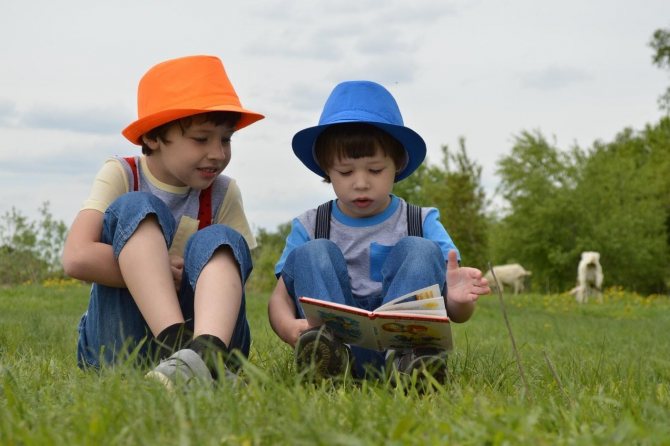
We draw our first ideas about good and evil, justice and deception from fairy tales. Good stories and beloved fairy-tale characters help young children become brave and resilient. Fairy tale treatment provides its patients with an alternative behavioral strategy that they can accept or reject.
We are all different, one child is inclined to fantasize, another loves to run and jump, another sits for hours sculpting animals or constructing a dollhouse. By combining various techniques, an experienced fairytale therapist can help each child experience and understand many situations that he has already encountered or will inevitably encounter in adulthood.
We are accustomed to viewing a fairy tale as entertainment, as a way to broaden our horizons, but in psychology a fairy tale is given a much greater role and significance, because it:
- can solve many life problems and answer internal questions;
- develops thought processes, improves memory, logic, attention;
- is able to convey from generation to generation the concepts of justice, kindness, love, fidelity;
- makes it possible to identify forgotten childhood psychological traumas;
- saturates the personality emotionally, causes sincere feelings;
- capable of changing human behavior.
TIPS FOR PARENTS
With the right approach, using fairy tales you can solve the following problems:
- laziness;
- sloppiness;
- deception;
- aggression;
- reluctance to go to kindergarten.
In case of serious phobias or the appearance of a new family member, it is better to seek the help of a professional.
Let's look at how a mother can use elements of fairy tale therapy at home for her preschooler. Often, it is not enough for a child to simply listen to the text of a fairy tale. It is important that his parents discuss it with him and help him understand the lessons that the plot and characters provide.
By reflecting with your son or daughter on each fairy tale you read, you can form a so-called “bank of life situations” - that is, what you can and cannot do in various cases. The more often such discussions occur, the faster the child will gain the necessary life experience. In this way, the parents will prepare him for an independent future life and help him form a value system.
If a child asks his mother to tell the same fairy tale several times, the request should be fulfilled, since she speaks of the importance of this story for the baby.
WHICH TALES TO CHOOSE?
Let's look at examples of fairy tales and requirements for them. For preschoolers and children 7 years old, the following options are suitable:
- household (“Ryaba Chicken”, “Kolobok”, “Porridge from an Axe”);
- magical (“Morozko”, “Puss in Boots”);
- heroic (“Dobrynya and the Serpent”, “Ilya Muromets”);
- instructive (“The Fox and the Crane”, “Goldfish”).
These can be both oral folk and original works. The main thing is that they meet the following requirements:
- The characters were understandable and interesting to children. An excellent option if the actor is a peer. Age specifics should also be taken into account: for 2-3 years old, animal heroes are preferable; at 4 years old, an element of magic should be introduced; at 5 years old, fairy tales already become the main ones.
- Characters should be clearly divided into positive and negative. Due to their age, it is still difficult for children to judge that an honest and kind person in certain circumstances does not always act well. Therefore, everything in the selected material should be accessible and unambiguous.
- The text itself should be chosen that is interesting to the child, close to him in subject matter and hobbies.
- The topic must be relevant. The lesson is conducted for a specific purpose, to solve some problem of the child (aggression, shyness, phobias), the material must be selected in such a way as to highlight these aspects.
- Availability of interchange. The problem must be solved, since this is the only way the child will receive a specific algorithm of action.
If she has imagination, mom can write a fairy tale herself, but you can use ready-made works by psychologists.
LESSON STRUCTURE
When conducting a fairytale therapy class, the following elements must be present:
- An immersion ritual that helps create the necessary mood. This could be listening to a cheerful tune that your child loves.
- Getting to know the text. It is advisable for the mother to tell a fairy tale; if this is not possible, expressive reading or listening to an audio recording with professional speakers is acceptable.
- Discussion. A conversation about what has been heard, allowing you to understand the lesson of the text, evaluate the actions of the characters, and identify the cause-and-effect relationship “action-consequence”.
- Art therapeutic element. Drawing heroes, creating a fairy-tale world in a sandbox. It is best to use a child's favorite activity.
- Exit ritual. Close your eyes, count out loud to three and leave the fairy-tale world, find yourself in the real one.
- Summarizing. A short summary of what was learned in class. At this stage, it is very important to avoid the use of moralizing by an adult, imposing the “correct position”.
The structure is not mandatory; you can modify it if desired. Such classes can be conducted both individually and in group form.
SOLVING SPECIFIC PROBLEMS
Let's consider how a mother can use fairy tale therapy to solve a number of important problems in the upbringing and development of a child.
| Problem | A fairy tale aimed at solving it |
| Eating whims, refusal of healthy foods | A fairy tale from the perspective of vegetables who talk about their own benefits. You can also include here a monologue of candy, which will appear as a negative character and talk about the harm it brings. |
| Sloppyness, the child does not see the point in order and does not want to keep his things clean | A fairy tale about a country of slobs, whose inhabitants do not maintain cleanliness and order. This leads to problems and difficulties (they cannot find the right thing at a crucial moment, the necessary magic item turns out to be broken or dirty). |
| The child is aggressive and often hits younger children for no reason. | A fairy tale about a bear cub, who wanted to show everyone that he was big and strong, offended other animals. As a result, no one became friends with him. One day he came to the aid of the little bunny and realized that his strength should be used for good, helping the weak. |
| The child is unsure of himself, timid, and is considered physically weak | The fairy tale “The Oak and the Blade of Grass” will help: in the clearing there grew a mighty oak tree and a thin blade of grass, which even the smallest gust of wind pressed to the ground. The oak tree laughed all the time at the weak blade of grass, but it grew, not paying attention to the ridicule. One day a hurricane passed through, so powerful that it uprooted an oak tree, and a blade of grass, although bent to the ground, was not damaged. |
The second option for working with fairy tales is texts dedicated to a specific child. As a rule, children are very interested in hearing about themselves. In such fairy tales, the baby is endowed with certain character traits that the parent wants to instill in him. For example, if a baby categorically refuses to go to bed in the dark, in the plot of the fairy tale he should appear as a brave hero who is not afraid of the night.
Fairytale therapy is a gentle method of psychotherapy that allows you to solve serious problems in a gentle manner. It is available for use at home. The main difficulty is the correct choice of material. This issue should be approached responsibly; if desired, you can compose a fairy tale yourself. This method is ideal for children, since the work is carried out on material accessible to preschool age, which, however, does not reduce its effectiveness.



